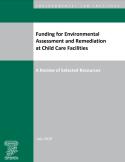
Research Reports
ELI publishes Research Reports available for free download that present the analysis and conclusions of the policy studies ELI undertakes to improve environmental law and policy. These reports contribute to education of the profession and disseminate diverse points of view and opinions to stimulate a robust and creative exchange of ideas. Those publications, which express opinions of the authors and not necessarily those of the Institute, its Board of Directors, or funding organizations, exemplify ELI’s commitment to dialogue with all sectors.
The American West, including the cities of Las Vegas, Nevada; Los Angeles, California; Phoenix, Arizona; and Denver, Colorado, falling under the reaches of the greater Colorado River Basin (CRB), is now among the world's water stressed regions facing the environmental, economic, and social challenges of increased water scarcity. The CRB supplies more than 1 in 10 Americans with some, if not all, of their water for municipal use, including drinking water.
Read More >
This report is the culmination of a three-month investigation into the nature of 3d-printing with regards to potential social and environmental implications. Three graduate students from the Sustainability Innovation MBA program at the University of Vermont teamed up with members of the Environmental Law Institute to identify these implications and offer recommendations for sustainability within the specific sector of maker-spaces in the 3d-printing industry.
Read More >
Environmental site hazards at a child care facility may arise from contamination of the air, soil, or water caused by historical uses of the property or nearby activities. Identifying and remedying such hazards is important for limiting harmful indoor and outdoor exposures to children and staff. The costs involved, however, can present challenges for child care operators, especially those serving historically underserved communities.
Read More >
In-Lieu Fee (ILF) mitigation is one of the three primary mechanisms—along with mitigation banks and permittee responsible mitigation—that permittees can use to satisfy compensatory mitigation requirements. Through an ILF program, a permittee may satisfy their legal obligations under the 2008 Compensatory Mitigation Rule by purchasing credits from the program “sponsor”—a government or non-profit natural resources management entity—who then uses the funds to restore, enhance, or protect wetlands and streams.
Read More >
This document was prepared by the Environmental Law Institute in partnership with Rare. The report describes the legal framework for regulation of small-scale fisheries and Marine Protected Area (MPA) management in and adjacent to the coastal waters of Belize. The report also describes the structure and function of the government of Belize.
Read More >